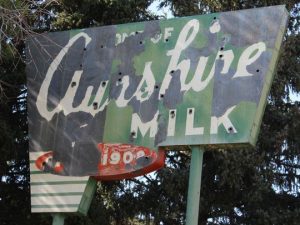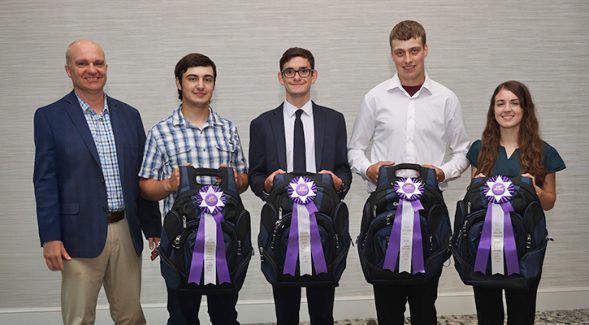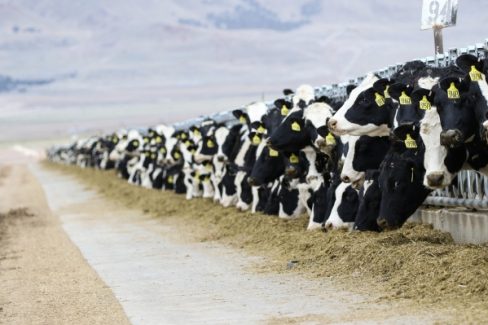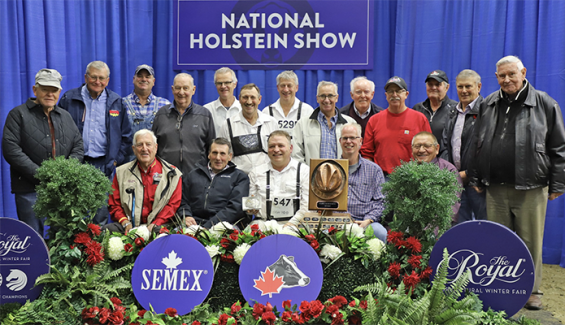The old barns at the Ayrshire Dairy are more than the sum of their parts – more than a tilted collection of weathered boards and fading paint.
The barns are a physical reminder of Montana’s agriculture history and a cherished heirloom of the family who made their home here so many decades ago.
 “They’ve been here almost from the very beginning, and so their demise is a big deal – at least it is for us,” said the Ayrshire Dairy’s patriarch, Harry Mitchell.
“They’ve been here almost from the very beginning, and so their demise is a big deal – at least it is for us,” said the Ayrshire Dairy’s patriarch, Harry Mitchell.
Stout and erect with a thinning shock of snow white hair, Harry Mitchell’s stature does not betray his 84 years. He has the no nonsense look of a man whose worked hard all his life. Knowing that the century old centerpieces of his family farm will soon be little more than a memory is difficult for Harry. It’s difficult for the entire Mitchell family.
“It’s emotional,” Harry’s daughter Fran Masters said.
She pauses for a moment, the crack in her voice revealing how personal the loss of the barns truly is.
“This has not been a light decision,” Masters said. “It has really come down to finances and safety. The Long Barn is no longer safe.”
Rather than see the barns completely destroyed, the Mitchells’ have chosen to have them deconstructed. Over the next several months, the Montana Rustic Lumber company will carefully pull that barns apart board by board saving the historical timber, to be repurposed in a new generation of floors, interior paneling and furniture.
“That’s the comfort that I have,” Fran Masters said. “It’s way different than a company coming in and bulldozing them into a heap. We are preserving and letting someone else enjoy the fruits of our family history. I’m very comforted by that. It makes me feel good.”
Yet there will still be a loss. By the time this winter’s snows fly, the Ayrshire Dairy barns will be no more. The loss extends beyond immediate family members.
For 76 years scores of Ayrshire milk cows made their twice daily trek into the “Long Barn” on the Mitchell farm. There they were fed, cared for and milked; contributing to what was once one of the largest independent dairies in Montana.
When it was built in 1914, the Long Barn was a state of the art milking facility. The stalls inside could service as many as 30 cows at a time. A raised “monitor roof” filled with windows provides a maximum of natural light and ventilation into the building. A tracked shuttle system once allowed a small handful of workers to slide slabs of hay to each waiting animal.
Just a few steps south stands another architectural beauty. The “Horse Barn” built in 1912 once stored the wagons and horses used to deliver milk to neighborhoods across Great Falls and the surrounding area. Three large gables give the Horse Barn its distinctive look. Its rough weathered lines are so distinctive that many wedding couples and fashion photographers have sought it out for their portfolios.
These buildings were not merely show pieces. They were the core infrastructure of a working dairy across four generations – and in the process became beloved cultural landmarks.
“Everywhere you go in Great Falls … people always have a story about the Ayrshire Dairy,” Masters said.
Those stories extend to scores of childhood memories. Throughout the 60s and into the 70s, hundreds of Great Falls 2nd graders road the school bus out to Ayrshire Dairy on annual field trips to learn where their milk came from.
All the trips ended with each child receiving a half pint carton of fresh chocolate milk. It’s a memory that many adult residents preserve fondly.
“From kindergarten all the way to 6th grade I was out here every year for a tour,” said Randy Suden.
Suden’s father, Bill Suden, was a longtime employee of the Ayrshire Dairy working both in the bottling plant and as a delivery driver. Today, Randy Suden operates a wild game meat processing business, Yellowstone Sausage, from the building that once housed Ayrshire Dairy’s bottling plant.
The story of the Ayrshire Dairy begins with Harry Brown Mitchell, who moved to the U.S. from Scotland with his parents and 10 brothers and sisters in 1880. Harry Mitchell and his wife, Mary, came to Great Falls in 1890.
Harry Mitchell had learned the printing trade in Minnesota, and became the managing editor and political correspondent for the Tribune by 1900. In 1906, the Mitchell’s bought land three miles south of Great Falls, and brought in a small herd of Ayrshire Highland cows to stock their new, emerging dairy.
Early on it was all done by hand, with milk delivered to local neighbors by a horse and buggy and ladled out of milk cans into the customers own jar. By 1925 the Ayrshire Dairy had a bottling plant in full operation. It was one of the first dairies in Montana to pasteurize its milk, and the very first to introduce homogenization.
However Harry Mitchell’s first love was politics and community service. He served as the mayor of Great Falls from 1923 to 1929, and was appointed by President Franklin Delano Roosevelt in 1933 to serve as chairman of the Civil Service Commission. The operation and expansion of Ayrshire Dairy was left in the hands of Harry’s son Fergus and his wife Harriet.
Fergus Mitchell oversaw the dairy’s daily operations. He supervised the milkers, tended the cow herd, mowed the hay fields and made sure all ran as smoothly and efficiently as was possible.
Harriet was the promoter, and in that capacity she was far ahead of her time.
“She’s the one who went to town to get customers to buy Ayrshire Milk,” Fran Masters said. “Her goal was to have as much of the space the grocery stores gave for milk be Ayrshire milk.”
That included an intensive advertising campaign in which Ayrshire milk was presented as the best food for growing healthy bodies.
“She used photographs of healthy, happy, local children with Ayrshire milk bottles and later cartons of milk poured into tall glasses,” an article from the magazine Signature Montana states of Harriet Mitchell.
The emphasis on promotion extended to even the youngest members of the Mitchell clan.
 “We only went to places that served Ayrshire milk,” Fran Masters said of Mitchell family outings to Great Falls restaurants. “We could never drink pop. Whenever the waiter asked what you would like to drink, we were trained to say, ‘I’ll have a glass of Ayrshire Milk’”.
“We only went to places that served Ayrshire milk,” Fran Masters said of Mitchell family outings to Great Falls restaurants. “We could never drink pop. Whenever the waiter asked what you would like to drink, we were trained to say, ‘I’ll have a glass of Ayrshire Milk’”.
Harriet Mitchell’s branding campaign worked. By the late 1960s Ayrshire Dairy was one of the largest in Montana, employing close to 60 people and supplying milk to grocery stores and restaurants throughout central Montana.
But the winds of change were blowing.
In the 1950s and 1960s dairy production largely consisted of family operated businesses. However mechanization and the concentration of resources gradually began to eat into this business model.
“In the 1950s and the 1960s there were basically five dairies in Great Falls – Ayrshire, Pioneer, Darigold, Meadow Gold and Jersey,” said Harry Mitchell.
After graduating from the University of Montana in 1955, Mitchell did a tour of duty with the U.S. Air Force. He came back to Montana and followed his grandfather into public service, serving as a Cascade County Commissioner for six years, and then another six years as a senator in the Montana state legislature.
Throughout that time the Ayrshire Dairy remained near the core of Harry Mitchell’s concerns.
“Pioneer and Ayrshire were the largest,” he said of competition amongst milk producers 40 years ago. “Pioneer sold out – I think in 1960 to Meadow Gold. The rest of them slowly dropped off.”
Ayrshire Dairy sold out at the largest independent dairy in Cascade County in 1973, to Vita Rich Dairy out of Havre. Processing and packaging of milk continued on at the Ayrshire plant for another five years.
Today, following a history of family dairy production in Montana going back more than 130 years, nearly the entire state’s milk production is controlled by two companies, Meadow Gold and Darigold.
This weekend, August 5th and 6th, the Mitchell family is inviting the general public to revisit the Ayrshire Dairy to take in the memories of a family and community tradition that will soon disappear.
“We really want the community to come out if they want to and see it,” Fran Masters said.
Source & photos: Great Falls Tribune, David Murray




